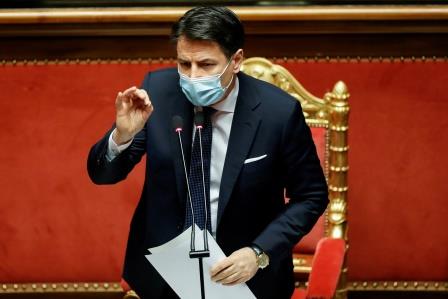ROME (ITALY) – Italian Prime Minister Giuseppe Conte was set to put forth his resignation to the head of state on Tuesday. He had pinned hopes to be given the opportunity to bring together a new coalition and build his parliamentary majority again.
The deepening political crisis has set in, even as the coronavirus pandemic is in the backdrop. The pandemic has killed more than 85,000 Italians, the second highest death toll in Europe after Britain and the sixth highest in the world.
Conte lost out on his absolute majority in the upper house Senate last week when a junior partner, the Italia Viva party headed by former premier Matteo Renzi, called it quits in a row over how the government handled the coronavirus crisis and economic recession.
Efforts to lure centrist and independent senators into the coalition ranks to fill the hole left by Renzi have met little success, leaving Conte no choice but to resign and open a formal government crisis that will give him more time to find a deal.
Conte called a cabinet meeting on Tuesday and announced his plans to quit. President Sergio Mattarella is expected to accept his resignation and hold rapid consultations with party leaders to test the political waters.
If he thinks Conte might get the necessary backing to pull together a new administration, he will give him a few days to try to finalise a deal and draw up a new cabinet.
However, if he fails, Mattarella will have to come up with an alternative candidate deemed capable of piecing together a workable coalition. If all else fails, he will have to call an election, two years ahead of schedule.
Conte is a lawyer with no direct political affiliation, but is close to the largest party in parliament, the anti-establishment 5-Star Movement.
He first came to power in 2018 after 5-Star formed an unexpected coalition with the far-right League.
Italy’s coronavirus crisis has triggered its worst recession since World War Two. The government has been grappling to make out a plan on the best way to spend some 200 billion euros ($240 billion) of European Union funds to help the economy get back to recovery.













